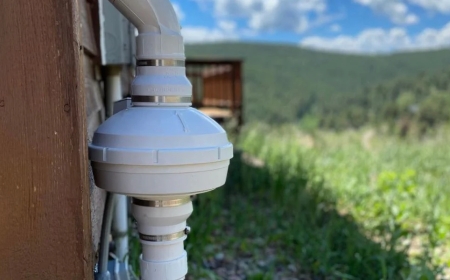The Day I Found My Missing Note: How to Expand Your Vocal Range
Struggling to hit the notes that move people? These singing exercises to improve range helped me break through—and they’ll help you too.

I remember the moment like it was yesterday.
I was standing in my bedroom, singing the same song for the sixth time. Everything sounded good until I hit the chorus. There was one high note that haunted me. Every time I reached for it, my voice cracked, faded, or just refused to show up. Id close my eyes, grip the mic tighter (yes, I was using a hairbrush), and try harder but it never came.
Sound familiar?
If you've ever had a missing note a place in your range that just doesnt work I want to tell you this: you're not broken. You're not untalented. You just need a new approach. You need real, focused singing exercises to improve range that help you connect with the voice thats already inside you.
And once you find that note everything changes.
What Most Singers Get Wrong About Range
Most of us try to force our range wider. We think if we push harder, strain more, or sing louder, the note will magically appear. But forcing is the fast track to burnout, vocal damage, and shattered confidence.
The truth is:
-
High notes require lightness, not tension
-
Low notes require support, not volume
-
Register shifts require awareness, not fear
You dont unlock your range with effort alone. You unlock it by learning to treat your voice like an instrumentnot a muscle to be muscled.
How I Finally Grew My Range (and How You Can Too)
It wasnt until I started using structured vocal exercises that I saw results. I was skeptical at first "lip trills? humming like a bee? But I gave it two weeks.
Heres what happened:
-
My voice stopped cracking on high notes
-
My low notes started sounding fuller and more confident
-
I sang songs I used to avoid
-
I felt powerful not perfect, butgrowing
Below are the same exercises that helped me turn things around. No fluff. No fancy equipment. Just simple tools that work.
Warm Up First Always
Before you try to sing outside your comfort zone, you must warm up. Cold vocal cords are stiff and prone to tension.
5-Minute Warmup Routine:
-
Lip Trills: Brrr with breath on a 5-note scale
-
Sirens: Slide from low to high on oo or ee
-
Humming: Gentle mm sounds through the nose
-
Breath Control: Inhale for 4, hiss out for 812 counts
Once your voice is awake, its time to stretch.
5 Singing Exercises That Actually Expand Your Range
These exercises are the heart of my range-building routine. Do them daily, even for just 1015 minutes. Consistency creates change.
1.The Lip Trill Ladder
Goal: Increase flexibility without tension
How to Do It:
-
Trill your lips while singing up a 5-note scale
-
Go up by half steps until you reach your limit
-
Keep it light, relaxed, and controlled
2.Octave Hops on Go
Goal: Strengthen transitions between registers
How to Do It:
-
Say go on a low pitch, then jump one octave up
-
Use clear tone, support from your belly not throat
-
Repeat 5 times, then move to a higher/lower starting note
3.Descending Ah Slides
Goal: Boost low note connection
How to Do It:
-
Sing ah from a mid-high note, slide down
-
Focus on full sound, not breathiness
-
Relax your jaw and neck as you go lower
4.Chest to Head Switch Drill
Goal: Build a smooth bridge between chest and head voice
How to Do It:
-
Start in chest voice on yah, then slide into head
-
Keep it soft and connected
-
Dont panic if your voice flips its learning
5.Hold and Stretch
Goal: Increase vocal endurance and confidence
How to Do It:
-
Pick a note at the top of your range
-
Hold it for 35 seconds, then step up a semitone
-
Go as far as you can without strain, then work back down
Your Weekly Plan (20 Minutes a Day)
You dont need hoursjust daily, focused effort.
| Day | Focus | Exercises |
|---|---|---|
| Monday | High Range | Lip Trill Ladder, Octave Hops |
| Tuesday | Low Range | Descending Ah, Breath Holds |
| Wednesday | Transition Day | Chest to Head Drill, Sirens |
| Thursday | All-Range Flow | Mix all exercises + a short song |
| Friday | Song Application | Sing something slightly outside your comfort zone |
| Saturday | Light Warmup | Hums + Sirens |
| Sunday | Rest |
Pro Tip: Record yourself once a week. Youll hear progress faster than you feel it.
What to Expect (and What to Be Patient With)
In the first week, your voice may resist. Thats normal.
By week 2 or 3:
-
Youll start to feel your mix voice
-
Your confidence will grow
-
Your vocal tone will become more stable
After a month of regular practice:
-
Youll likely gain 24 new notes
-
Songs with tricky bridges or choruses wont scare you
-
Youll stop hoping for your voice to cooperate and starttrusting it will
Dont Let the Voice in Your Head Stop the Voice in Your Throat
Heres the truth: range growth is 50% technique, 50% mindset.
If you believe your voice cant grow youre right. But if you give it the time, grace, and guidance it needs? It will surprise you.
Ive been where you are. Frustrated. Stuck. Ready to quit. But Im so glad I didnt because the note I thought was impossible is now part of my warmup.
You can get there too. Just start with these singing exercises to improve range, stay consistent, and listen to your voice not your fear.

































